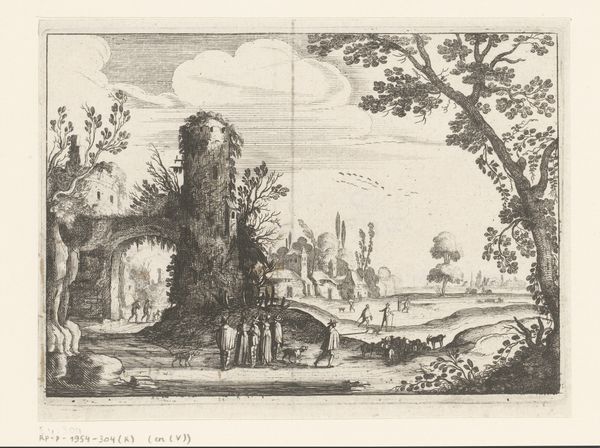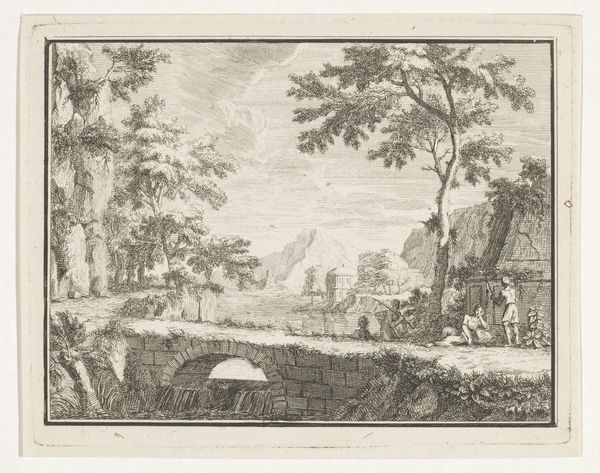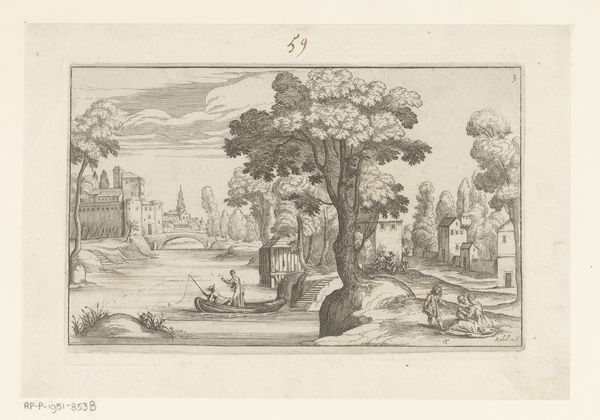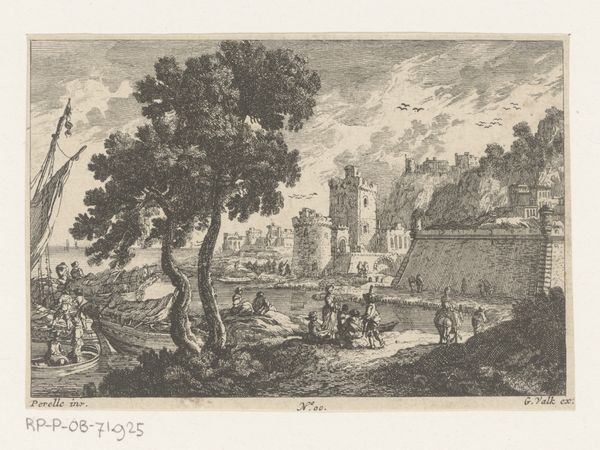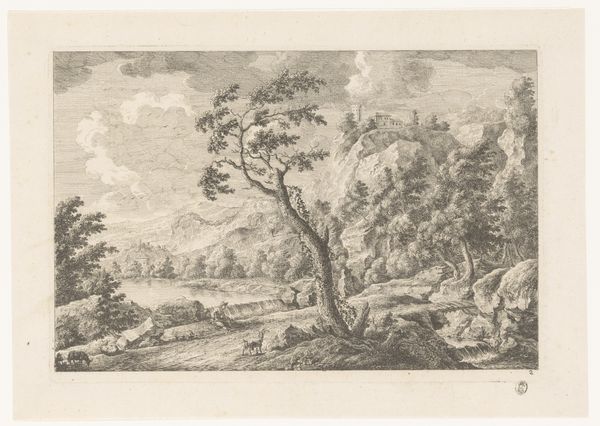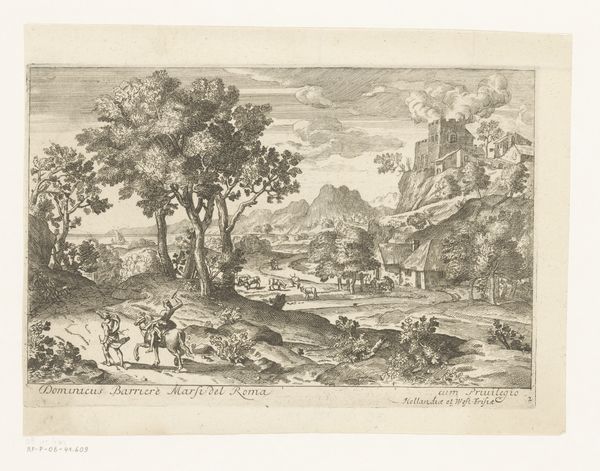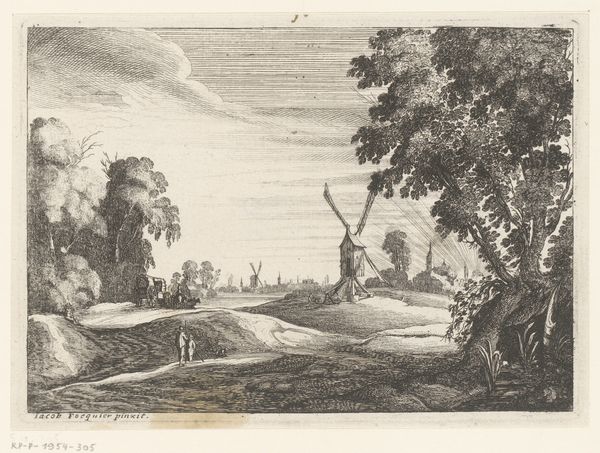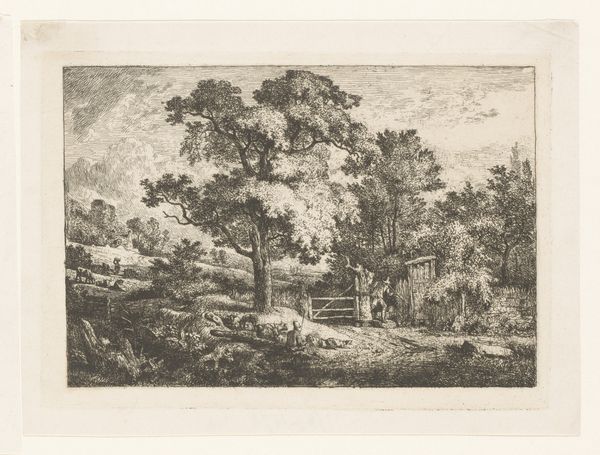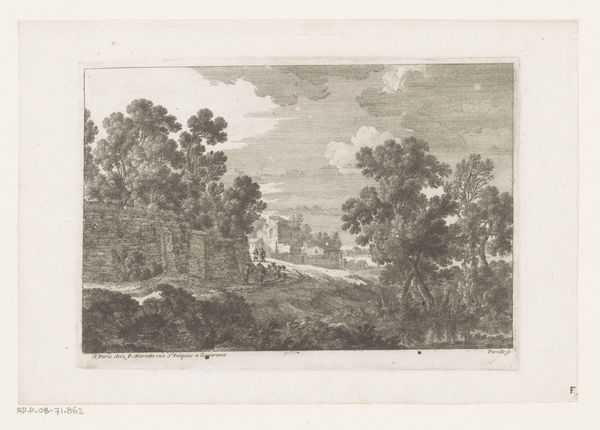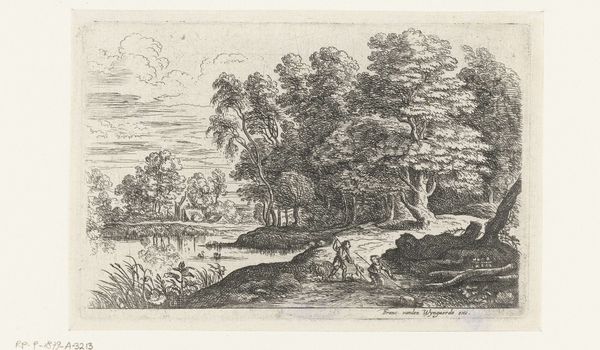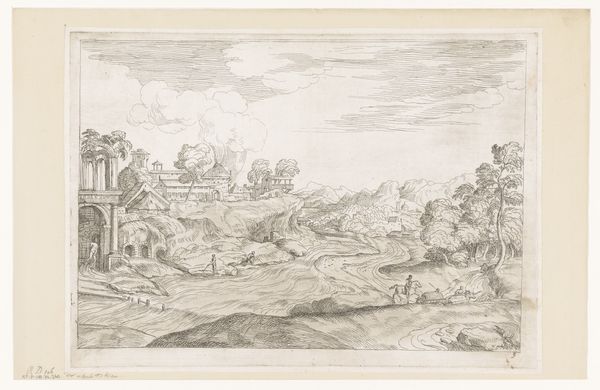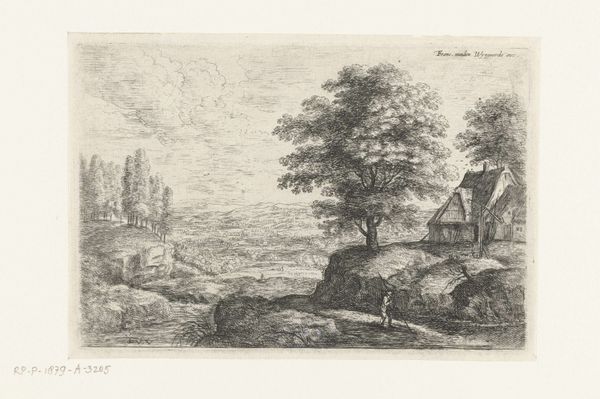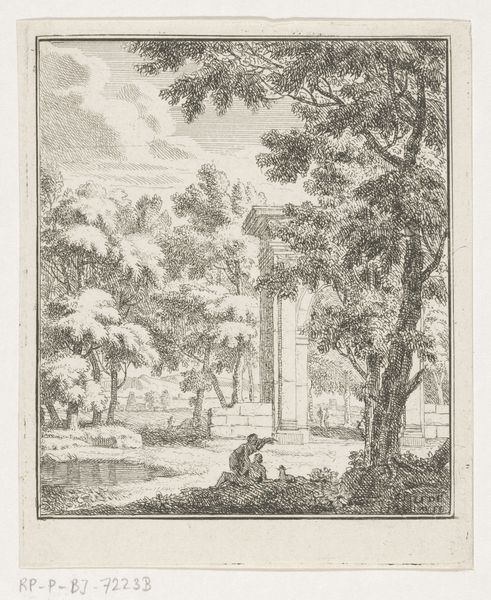
print, etching
#
baroque
# print
#
etching
#
landscape
Dimensions: height 115 mm, width 163 mm
Copyright: Rijks Museum: Open Domain
Editor: So, this is "Landscape with River and Rider", an etching print dating back to somewhere between 1620 and 1686, currently housed at the Rijksmuseum. It's credited to Nicolas Cochin, although that's a pseudonym. What strikes me is how meticulously the rural scene is rendered using only black lines, quite impressive. What do you make of this piece? Curator: What's interesting here is the way this print participates in the broader historical context of landscape imagery. Prints like this became popular during the Baroque period, not just for aesthetic reasons, but because they served a real social function. Consider how it depicts nature, almost as a controlled, manageable space with human figures integrated harmoniously. Why might that appeal to patrons of this time? Editor: I guess wealthy landowners appreciated this depiction as some type of proof for the value of land investment. But if the author used a pseudonym, wouldn't that somewhat defy a traditional role in proving the landscape? Curator: Precisely! So the key to interpretation involves identifying its intended audiences and understanding their aspirations of status and societal position. Etchings could also function as visual records of estates or even idealized projections of them, circulated among a specific group to project affluence, which allowed artists some anonymity. It suggests these images were very much entwined with social aspirations and power dynamics of the era. What else catches your eye? Editor: Well, it feels like there's an implied narrative with the rider. Where is he going? And does the artist intend to provide some insight? Curator: Exactly! Considering these prints served multiple purposes - decoration, documentation, social signaling, their appeal stems from carefully constructing visual narratives of social and land ownership through which viewers actively engage. How does considering that social element affect your initial impression of the work? Editor: It definitely adds depth. It's no longer just a pretty picture; it’s like a snapshot of social values and aspirations of a specific era and the power relations that determine artistic production and reception. Curator: Right, understanding its historical placement fundamentally shifts the perspective of not only landscape art but other mediums and the art world itself.
Comments
No comments
Be the first to comment and join the conversation on the ultimate creative platform.
